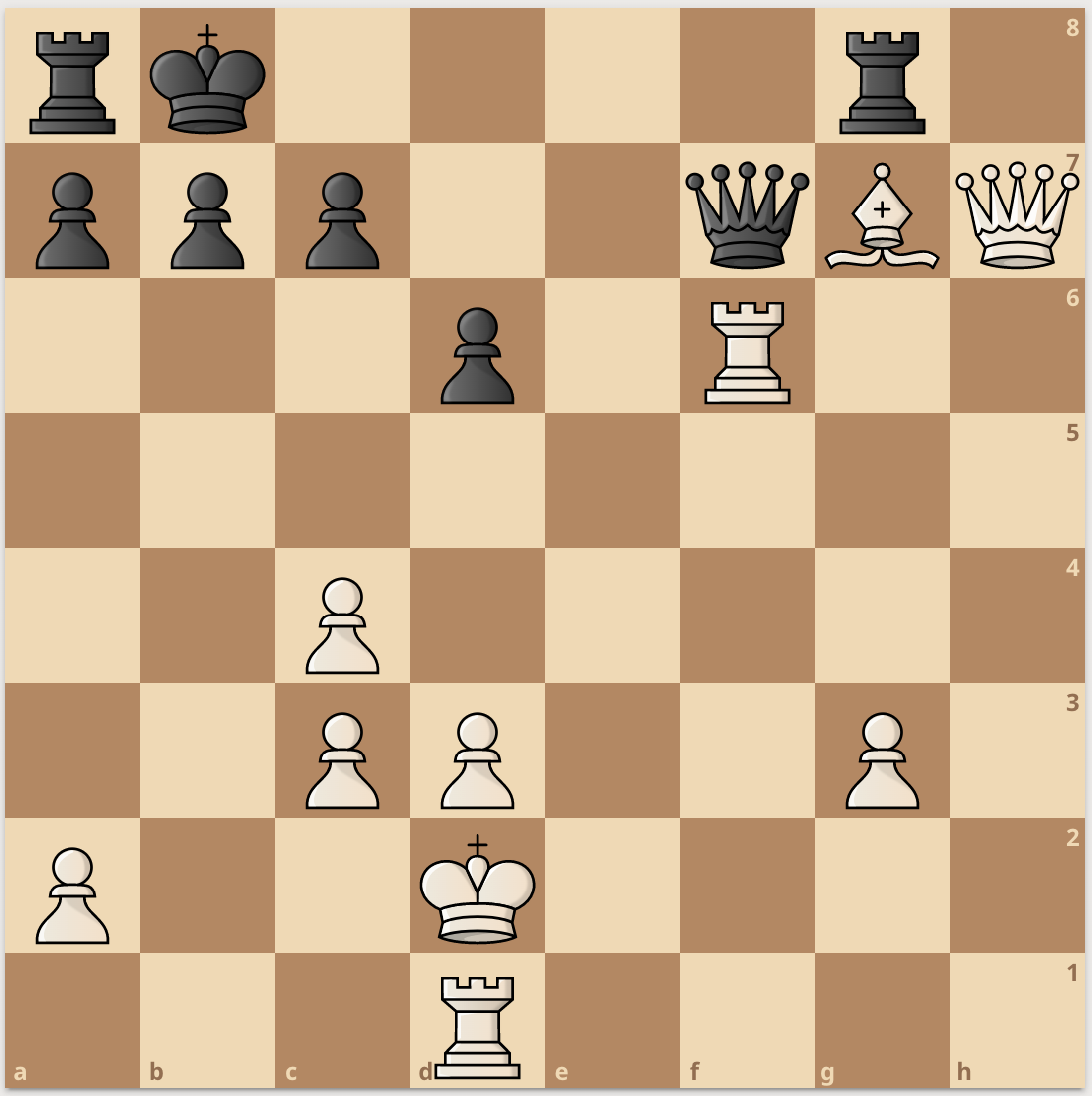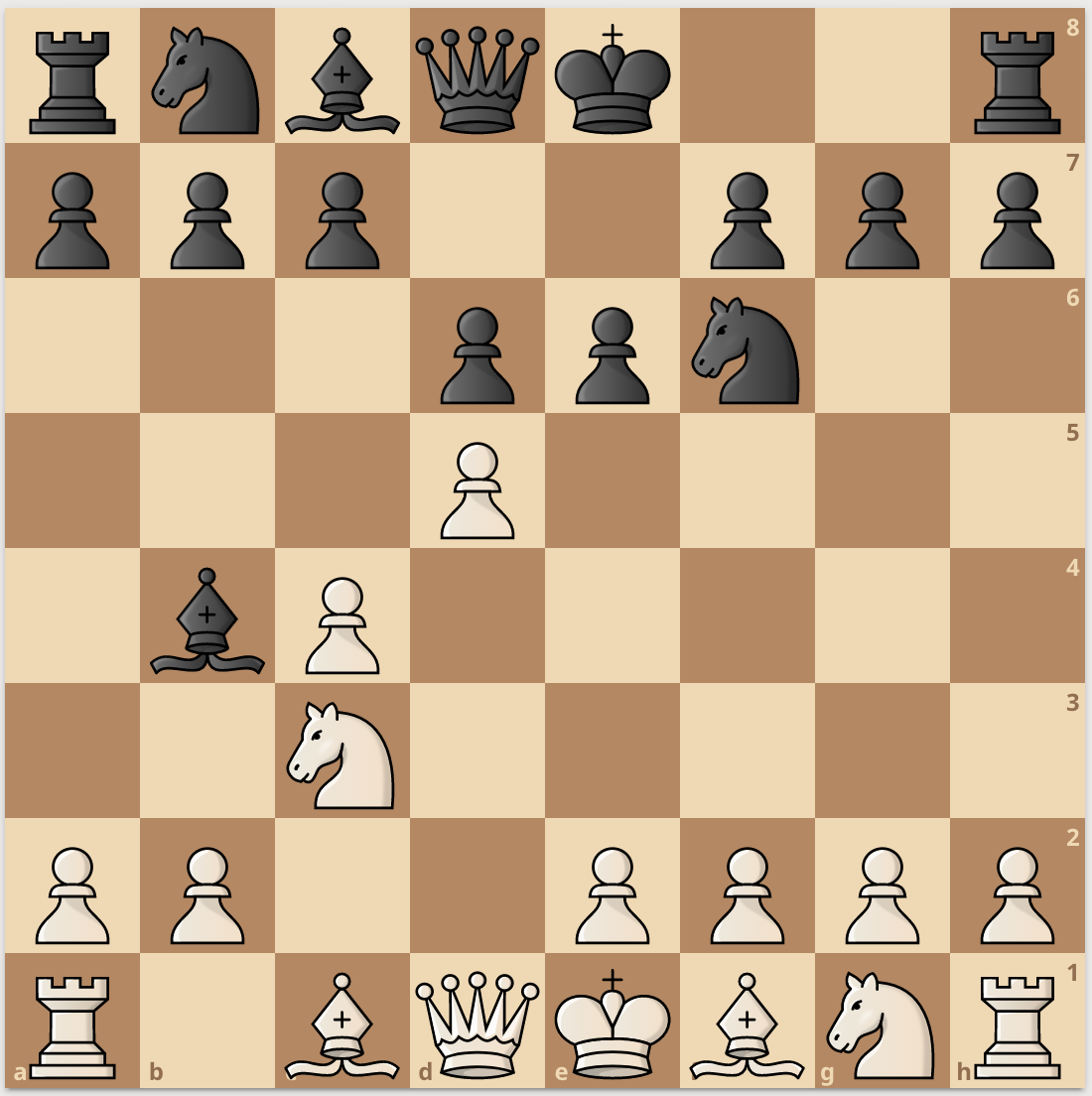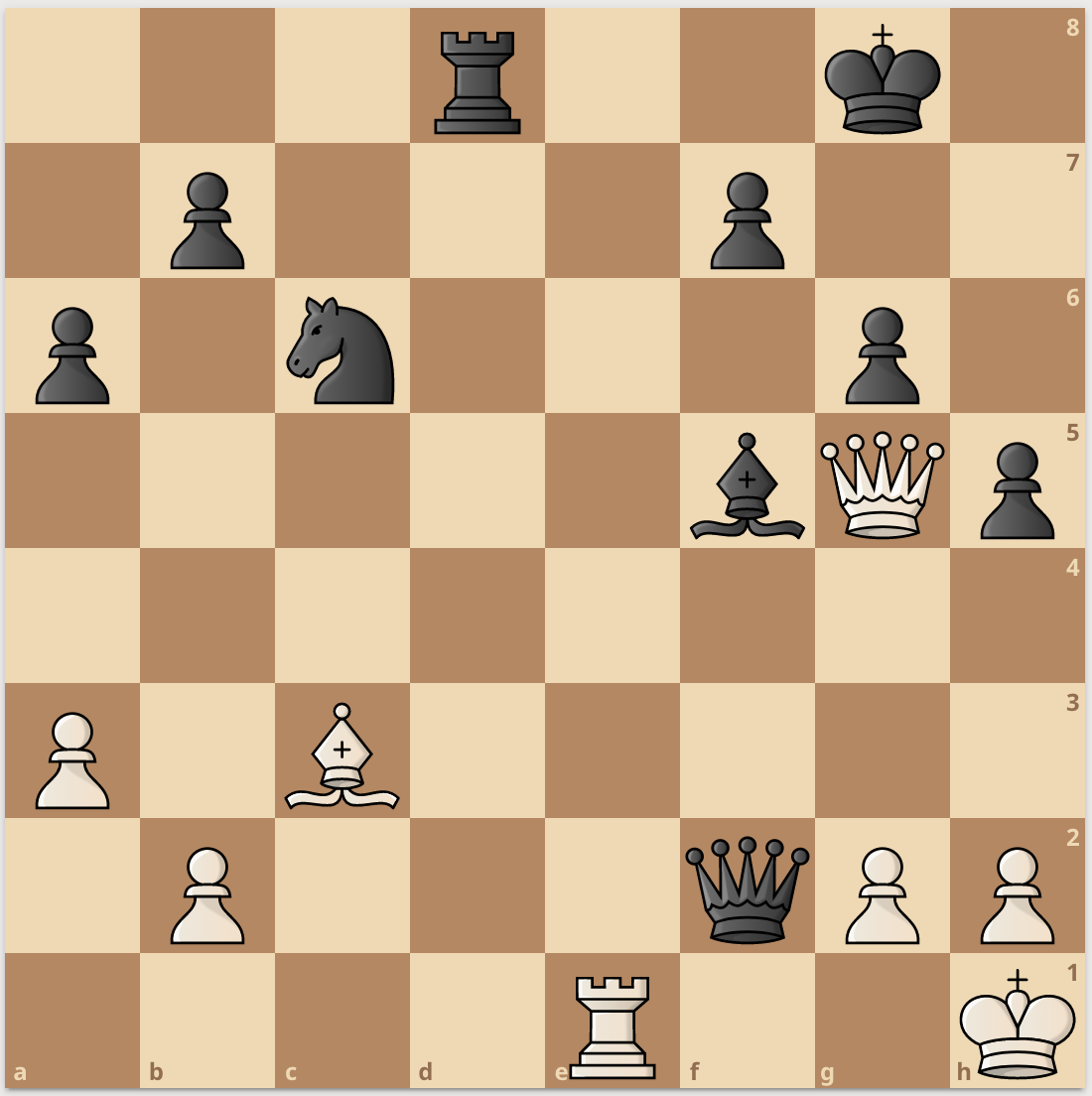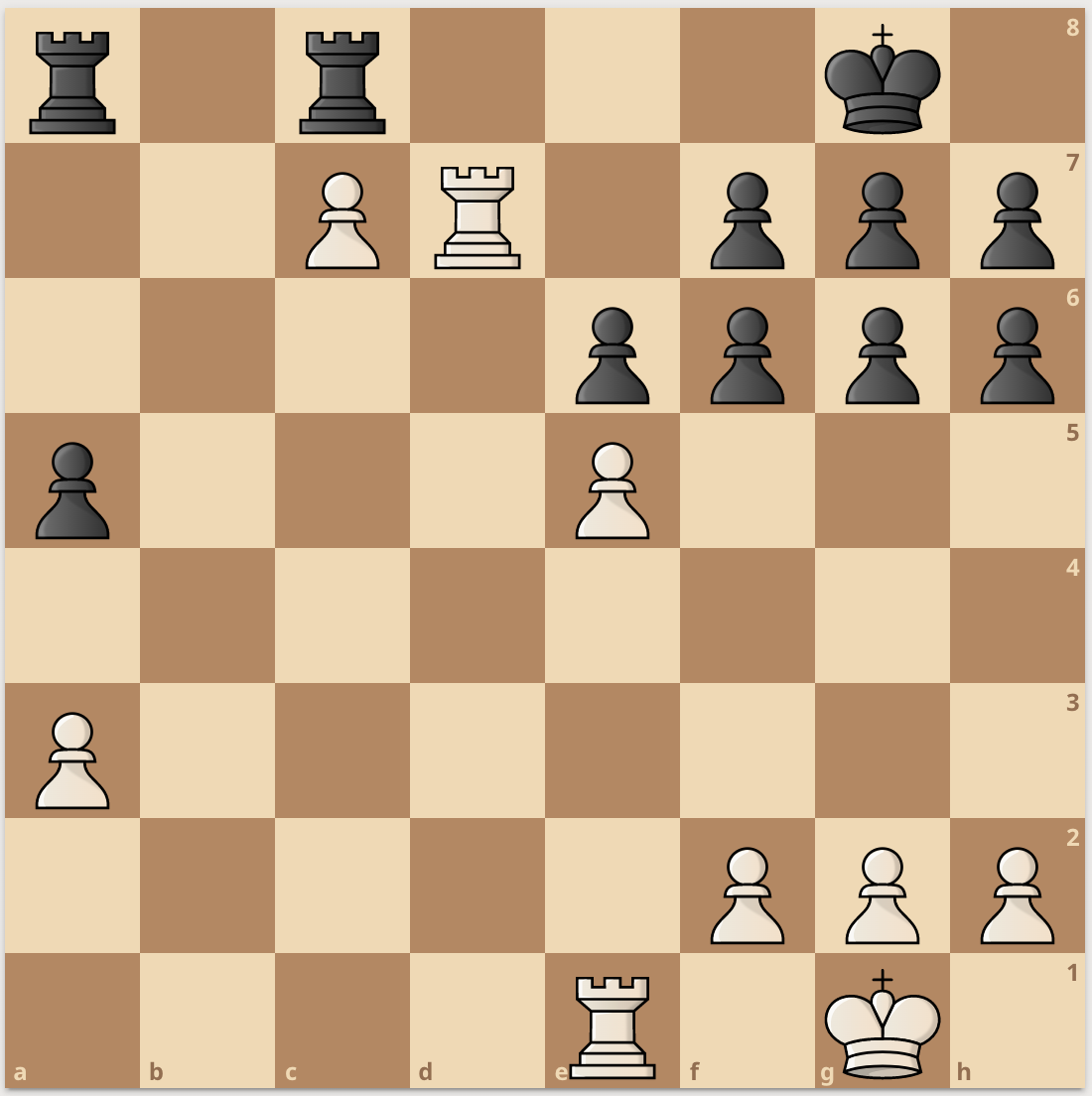Paul JF
Tactical Quiescence Search (TQS)
A tactical quiescence search (TQS) is a quiescence search algorithm with more extensions. The engine finds tactics beyond the scope of capture-only moves.
The idea
Quiescence Search algorithm (QS) is used to ensure the engine analyses only quiet positions, to favor it finds a tactical moves. Tactics in QS are mostly based on cature-only moves and sometimes on checking moves.
TQS brings more to the table by considering other non-quiet moves, like check-evader moves and promotions. Non-quiet moves are the essence of tactical play, thus scrolling through them helps making better tactical decisions. In the example section, the TQS remarquably finds several type of tactics. In the limiting factors section, the pros and cons of the TQS are (further) discussed.
Pseudo Code
Here is a pseudo C code for the TQS algorithm, where check_depth is the maximum amount of check extension in a given line of quiescence search, and quiesce_moves() is a generator of all the differents quiescent moves mentionned above (captures, checks, promotions, check-evaders) :
// Tactical Quiescence Search (TQS)
int TQS(int alpha, int beta, int check_depth=10) { // check_depth could be changed
stand_pat = evaluate();
moves = quiesce_moves();
// enf of line
if (no move in moves) {
legals = legals_moves();
if (no move in legals) {
if is_checkmate() {
return -mateValue + nodeHeight; // for mate distance pruning
}
return 0; // it is a draw
}
}
// mate distance pruning
// upper bound
mating_value = mateValue - nodeHeight;
if (mating_value <= beta) {
beta = mating_value;
if (alpha >= mating_value) {
return mating_value;
}
}
// lower bound
mating_value = -mateValue + nodeHeight;
if (mating_value >= alpha) {
alpha = mating_value;
if (beta <= mating_value) {
return mating_value;
}
}
// normal QSearch stuff
if (stand_pat >= beta) { // beta cutoff
return beta;
}
if (alpha < stand_pat) {
alpha = stand_pat;
}
for (move in moves) { // move is defined above
// check extension : checking moves
if !( is_capture(move)) && gives_check(move) { // capture moves giving check could be treated normally
// extension limite reached
if (check_extension <= 0) {
continue;
}
// extension search
make(move);
score = -TQS(-beta, -alpha, check_depth-1);
unmake(move);
if (score >= beta) { // beta cutoff
return beta;
}
if (score > alpha) {
alpha = score;
}
continue; // to avoid else statement on no-checking move
}
make(move);
score = -TQS(-beta, -alpha, check_depth);
unmake(move);
if (score >= beta) { // beta cutoff
return beta;
}
if (score > alpha) {
alpha = score;
}
}
return alpha;
}
If quiesce_moves() does not generates checks-evaders, the following addition is possible (after end of the game checking) :
// almost in the code
if (no move in legals) {
if is_checkmate() {
return -mateValue + nodeHeight; // for mate distance pruning
}
return 0; // it is a draw
}
// check extension (tactical) : check-evaders moves
if is_check() {
for (move in legals) {
make(move);
score = -TQS(-beta, -alpha, check_depth);
unmake(move);
if (score >= beta) { // beta cutoff
return beta;
}
if (score > alpha) {
alpha = score;
}
return alpha;
}
}
Notice that this piece of code (concerning beta-cutoff) appears several times in the code, so the code could probably be optimised :
if (score >= beta) { // beta cutoff
return beta;
}
if (score > alpha) {
alpha = score;
}
Examples
In this section, the following position has been considered to compare classic QS and TQS.
Check-extensions

Black to play. FEN : rk4r1/ppp2qBQ/3p1R2/8/2P5/2PP2P1/P2K4/3R4 b - - 0 1
Here, the best move is 1... Qe8.
But a classical quiescence search with no check-extension will find 1... Qxg7 as the best move, because 2. Qxg7 Rxg7 wins the bishop. But without check extension, the QS is oblivious to 3. Rf8#.
In this case, TQS finds 1... Qe8 as the best move.
Check evasions

White to play. FEN : rnbqk2r/ppp2ppp/3ppn2/3P4/1bP5/2N5/PP2PPPP/R1BQKBNR w KQkq - 0 1
Here, the best move is 1. Qa4+.
A classical QS + check-extensions can see that move, but as it gives check and there is not any possible captures or checking moves after 1. Qa4+, QS will ask an evaluation. Unless SEE is implemented in evaluation, QS will not see why this move is so good, taking the bishop in b4.
However, TQS will see all possible tactical lines after 1. Qa4+ and will see that White is winning a bishop (or a knight after 1... Nc6).
Check-extensions + Check evasions

White to play. FEN : 3r2k1/1p3p2/p1n3p1/5bQp/8/P1B5/1P3qPP/4R2K w - - 0 1
Here, the right sequence is 1. Qxd8+ Nxd8 2. Re8+ Kh7 3. Rh8#.
With a classical approach, QS will not search 1. Qxd8+ with captures-only moves, because after 1. Qxd8+ Nxd8 White loses the queen.
As each move gives or responds to a check, TQS finds the best sequence.
Promotions

White to play. FEN : r1r3k1/2PR1ppp/4pppp/p3P3/8/P7/5PPP/4R1K1 w - - 0 1
Here, the correct answer is 1. Red1, preparing 2. Rd8+ Rxd8 3. Rxd8+ Rxd8 4. exd8=Q#. However, Black plays 1... Re8 to prevent mate, but after 2. Rd8 Kf8 3. Rxa8 Rxa8 4. Rd8+ Ke7 5. Rxa8 and the promotion 6. c8=Q is unavoidable. Then in this position White can safely promote the c pawn.
However a classical QS (even with check-extensions + check evasions) would never see the promotion and abort this line.
Here, even TQS can’t find the best line, but {search depth 4 + TQS} can find it while {search depth 4 + QS} won’t, due to pawn promotion (depth 4 is where the first capture occurs).
Pros / Cons
Advantages of TQS
- As described in the examples section, TQS can find tactics that a classic QS won’t.
- The score of a position is more accurately determined with TQS.
- For low depth searches, TQS is essential.
- TQS becomes really good with a fast move generator.
Disadvantages of TQS
- TQS explores more nodes than a classical QS.
- TQS is slower than a classical QS.